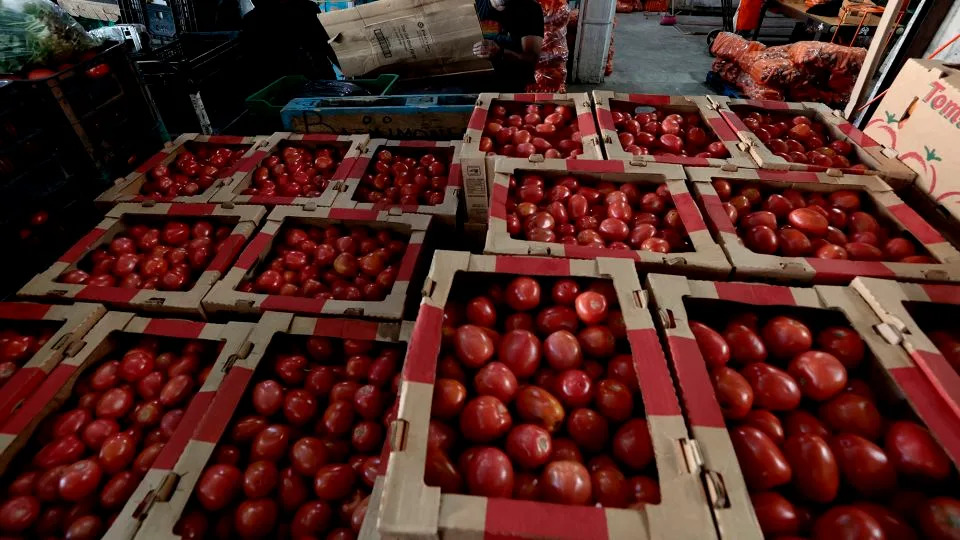
US tomato prices could jump as soon as Monday amid Mexico tariff threat
Key Points
- Tomato Tariffs Threaten Businesses: New 20.9% tariffs on Mexican tomato imports, set to replace a long-standing US-Mexico trade agreement on July 14, could drive up prices, risking bankruptcy for small businesses like Teresa Razo’s Argentine-Italian restaurants in Southern California.**
- Consumer Impact: Tomato prices for US consumers, currently around $1.70 per pound, may increase by about 10%, potentially reducing demand by 5%, according to agribusiness professor Timothy Richards.**
- Trade Policy Controversy: The tariffs, part of President Trump’s unpredictable trade policies, aim to combat “dumping” of cheap Mexican tomatoes, though Mexican growers argue the agreement has been largely upheld and violations are minimal.**
- Mixed Business Strategies: While some companies like Heinz and DiGiorno avoid tariffs by using US-grown tomatoes, others like Appollonia’s Pizzeria may absorb costs or switch suppliers seasonally, adding to operational stress.**
Summary
The impending 20.9% tariffs on Mexican tomato imports, set to replace a nearly three-decade-old US-Mexico trade agreement on July 14, are causing alarm among US businesses and consumers. Restaurant owner Teresa Razo fears bankruptcy for her Southern California eateries within three months due to rising costs, as tomatoes are essential for her dishes. Consumer prices, currently at $1.70 per pound, could jump by 10%, potentially curbing demand. The tariffs, part of President Trump’s erratic trade policies, aim to protect US growers from “dumping” by Mexican producers, though Mexican growers like Walberto Solorio argue the agreement has been mostly honored. US growers, represented by Robert Guenther, claim the tariffs are overdue to safeguard domestic markets. Businesses face varied impacts: some, like Heinz, use domestic tomatoes and avoid tariffs, while others, like Appollonia’s Pizzeria, may absorb costs or juggle suppliers. The uncertainty breeds “instability” and “fear” among small business owners like Razo, who are bracing for price hikes or sourcing alternatives amidst a chaotic trade landscape.
yahoo
July 14, 2025
Stocks


